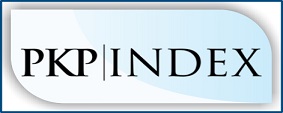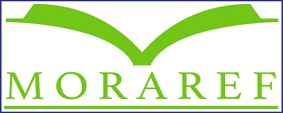Hubungan Topografi Wilayah Tempa Tinggal Ibu Menyusui dengan Kadar Fe dalam ASI di Sumatera Barat
DOI:
https://doi.org/10.31004/prepotif.v4i2.1041Keywords:
breast milk (ASI), topographic, Level of Fe, AASAbstract
The quantity and quality of breast milk produced are affected by the food consumed by mothers daily. Judging from the geographical condition and aquatic resources, people in lowland (coastal) blood will consume more animal foods that come from the sea, such as fish, shellfish, and the like. People in the highlands will be more likely to consume food items derived from small livestock such as poultry and the like. This is thought to have an impact on the levels of Fe in breast milk (ASI), considering that the concentration in breast milk is influenced by the mother's diet. This study is an observational study with a cross-sectional comparative design to see the differences in Fe levels in breast milk in breastfeeding mothers who live in the highlands and the lowlands. The sample used is the minimum sample for experimental research and questionnaires, namely 40 respondents for each region. To determine Fe levels, measurements were taken in the LLDIKTI X integrated laboratory using AAS. The FFQ questionnaire was used to determine the nutritional content. Data analysis used the Mann-Whitney nonparametric test. The results of this study were that the iron intake in breastfeeding mothers was higher in the lowlands than mothers in the highlands so that there was a regional topographic relationship to iron levels in breastfeeding mothers with a p-value: 0.000.References
Anggraini, L., Lestariana, W. and Susetyowati, S. (2015) ‘Asupan gizi dan status gizi vegetarian pada komunitas vegetarian di Yogyakarta’, Jurnal Gizi Klinik Indonesia, 11(4), p. 143. doi: 10.22146/ijcn.22986.
Auliya, C., Woro, O. and Budiono, I. (2015) ‘Profil Status Gizi Balita Ditinjau Dari Topografi Wilayah Tempat Tinggal (Studi Di Wilayah Pantai Dan Wilayah Punggung Bukit Kabupaten Jepara)’, Unnes Journal of Public Health., 4(2), pp. 108–116. doi: 10.15294/ujph.v4i2.5739.
Brown, K. H. et al. (2017) ‘Dietary Intervention Strategies to Enhance Zinc Nutrition : Promotion and Support of Breastfeeding for Infants and Young Children’, HHS Public Access, 30(1), pp. 144–177. doi: 10.1177/15648265090301S108.
Castillo-Castañeda, P. C. et al. (2019) ‘Micronutrient content and antioxidant enzyme activities in human breast milk’, Journal of Trace Elements in Medicine and Biology. Elsevier GmbH., 51, pp. 36–41. doi: 10.1016/j.jtemb.2018.09.008.
Friel, J., Qasem, W. and Cai, C. (2018) ‘Iron and the breastfed infant’, Antioxidants, 7(4), pp. 2–9. doi: 10.3390/antiox7040054.
Lestari, I. P., Lipoeto, N. I. and Almurdi, A. (2018) ‘Hubungan Konsumsi Zat Besi dengan Kejadian Anemia pada Murid SMP Negeri 27 Padang’, Jurnal Kesehatan Andalas, 6(3), p. 507. doi: 10.25077/jka.v6i3.730.
Maru, M., Birhanu, T. and Tessema, D. A. (2013) ‘Calcium, magnesium, iron, zinc and copper, compositions of human milk from populations with cereal and “enset†based diets.’, Ethiopian journal of health sciences, 23(2), pp. 90–97.
Wang, H. J. et al. (2017) ‘Sialic acid and iron content in breastmilk of Chinese lactating women’, Indian Pediatrics, 54(12), pp. 1029–1031. doi: 10.1007/s13312-017-1206-z.
Young, I. et al. (2018) ‘Association between haem and non-haem iron intake and serum Ferritin in healthy young women’, Nutrients, 10(1), pp. 1–13. doi: 10.3390/nu10010081.
Downloads
Published
How to Cite
Issue
Section
License
Copyright (c) 2020 Dewi susilawati

This work is licensed under a Creative Commons Attribution-ShareAlike 4.0 International License.
Authors who publish with this journal agree to the following terms:
- Authors retain copyright and grant the journal right of first publication with the work simultaneously licensed under a Creative Commons Attribution License that allows others to share the work with an acknowledgement of the work’s authorship and initial publication in this journal.
- Authors are able to enter into separate, additional contractual arrangements for the non-exclusive distribution of the journal’s published version of the work (e.g., post it to an institutional repository or publish it in a book), with an acknowledgement of its initial publication in this journal.
- Authors are permitted and encouraged to post their work online (e.g., in institutional repositories or on their website) prior to and during the submission process, as it can lead to productive exchanges, as well as earlier and greater citation of published work (See The Effect of Open Access).











